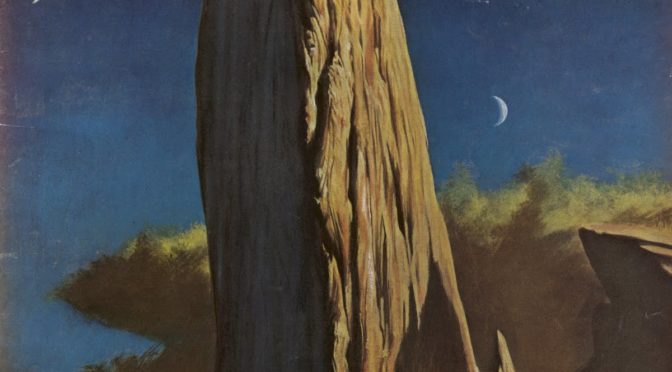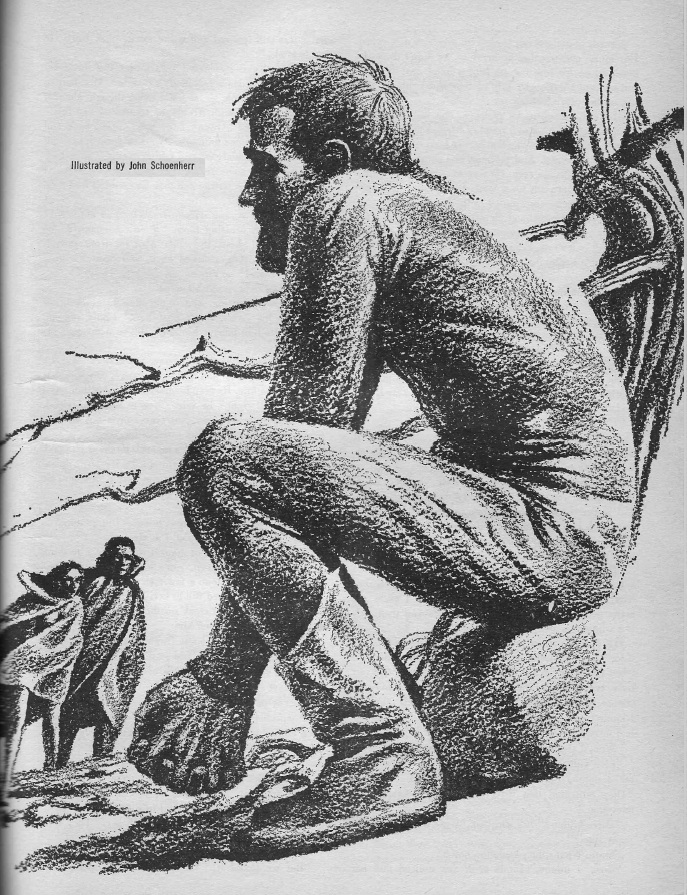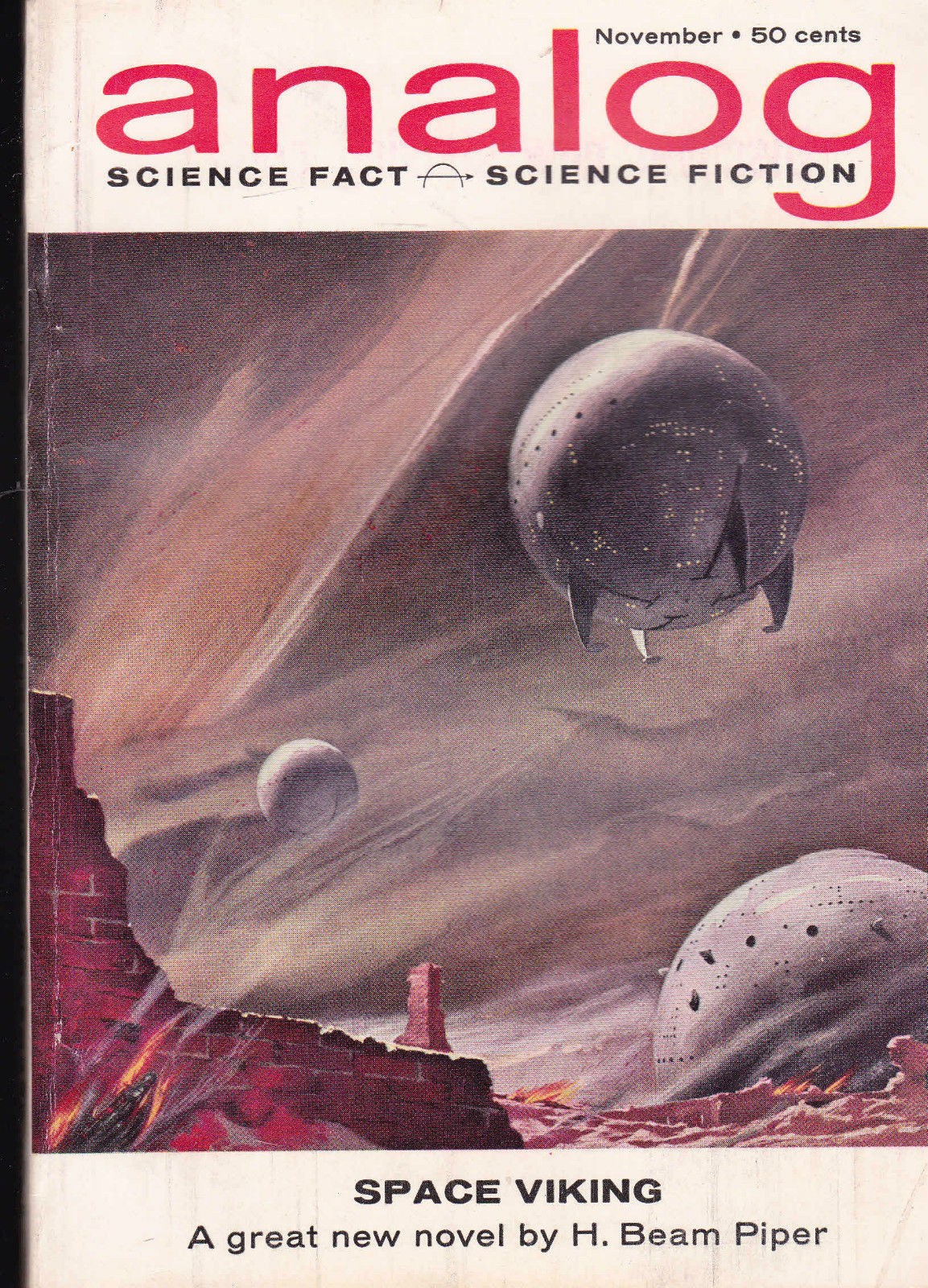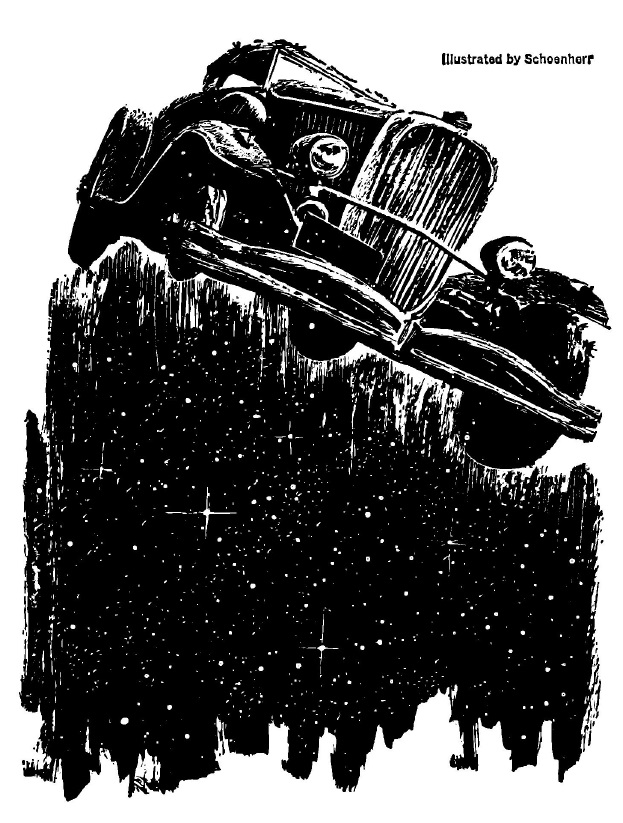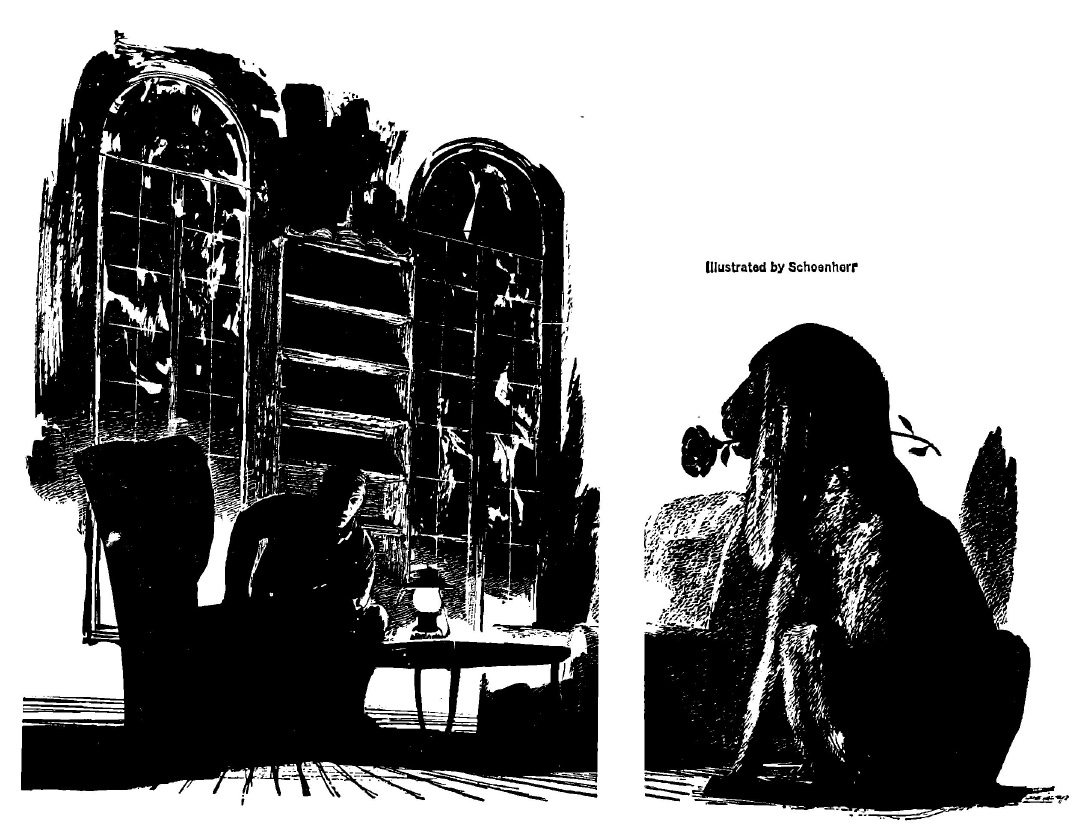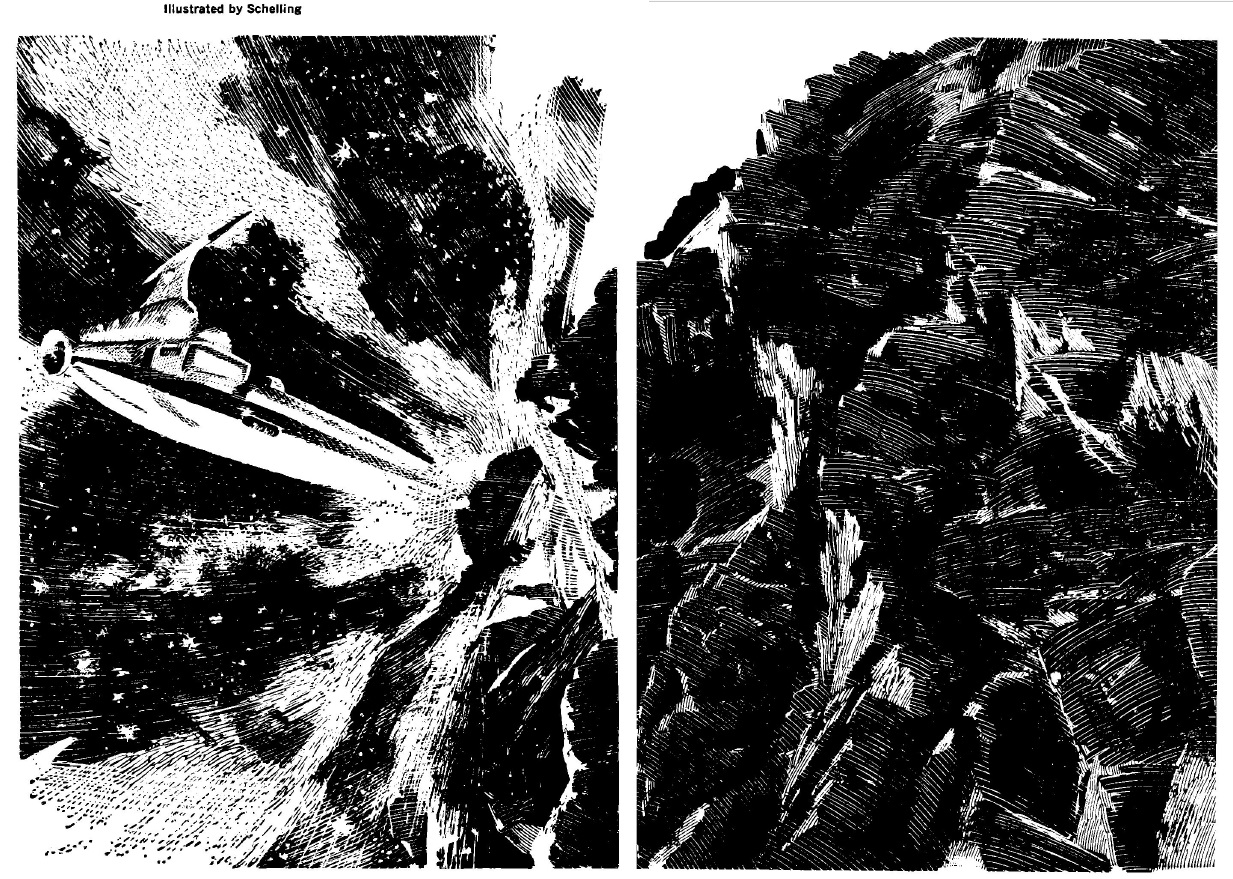
by Gideon Marcus
The Big One
Billions of years ago, the entire universe was smaller than the head of a pin. For an endless eternity, or perhaps just an instant, it remained in this state – and then it exploded outward with the force of creation, ultimately becoming all that we see today.
Until this year, this "Big Bang" theory was as yet unconfirmed. It had stiff competition in the "Steady State" hypothesis, which postulated that the universe is indeed expanding, but because of matter being constantly created. This was fundamental to the plot of Pohl and Williamson's recent novels set in the reefs of space at the edges of our solar system.
But last year, Arno Penzias and Robert Wilson at the Bell Telephone Laboratories in Murray Hill, New Jersey noticed an excess of radio noise in the receiver they were building, an excess that closely resembled the Cosmic Microwave Background predicted by physicists Ralph Alpherin, Robert Herman, and George Gamow. This extremely low level but pervasive energy is what's left of the heat of the primeval explosion, reduced to microwaves by the expansion of the universe.
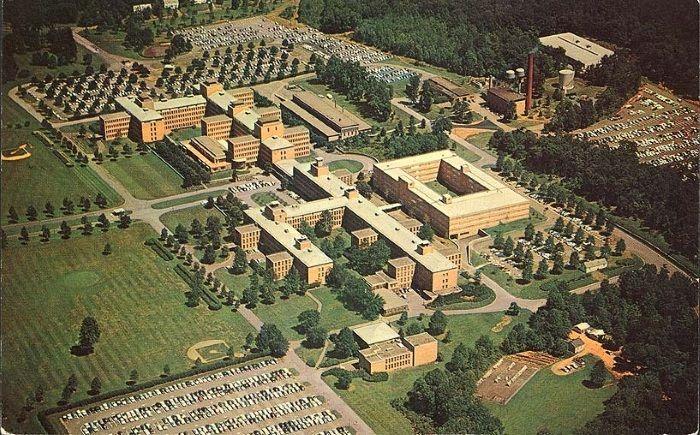
The Murray Hill facility where the echoes of the Big Bang were discovered
Smaller Ones
Here on Earth, it seems our planet is anxious to imitate the violence of the universe at large. On September 28, the Taan Volcano off the coast of the Philippine island of Luzon exploded, killing hundreds of Filipinos.
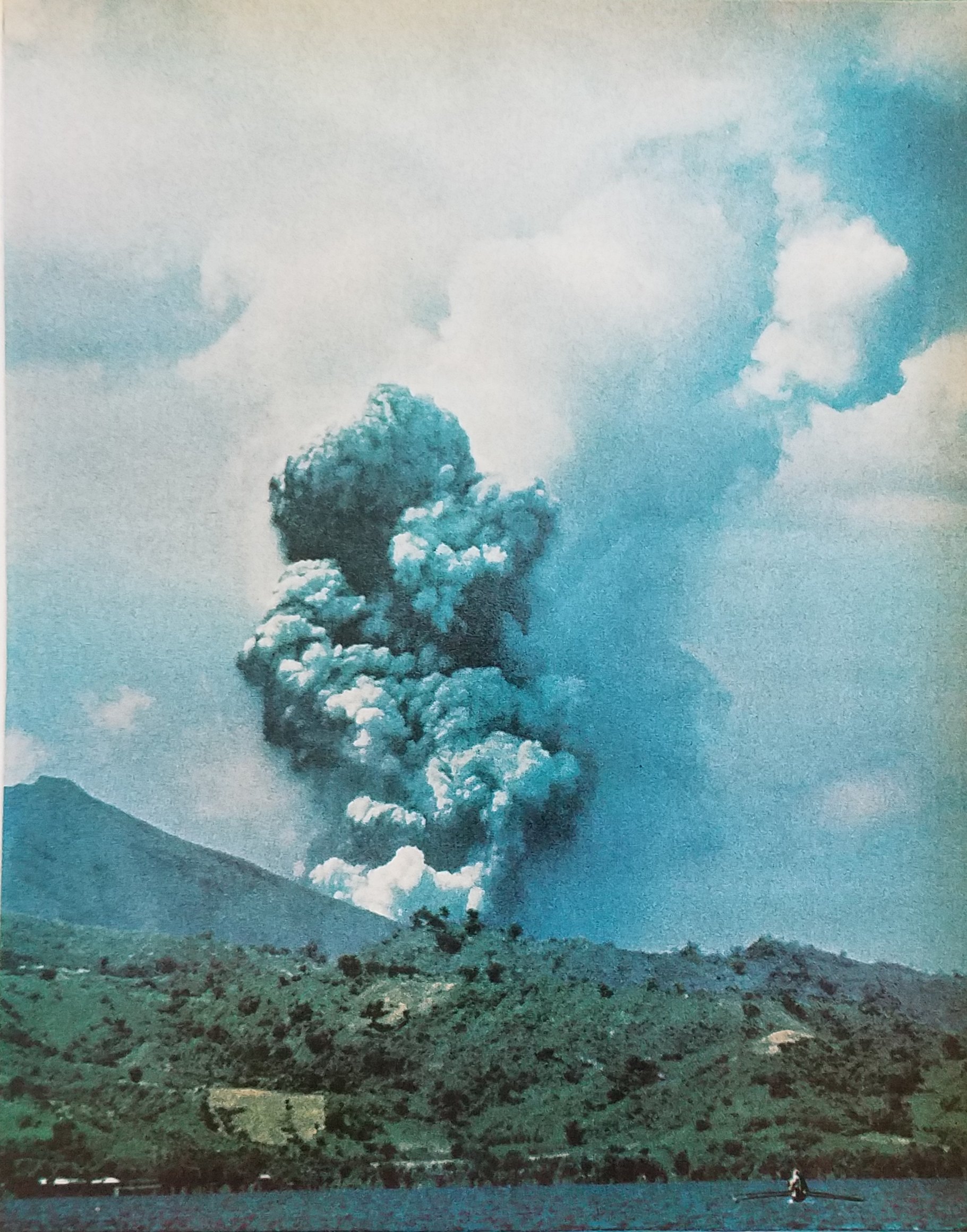

And less of a bang and more of a blaaat, we've just finished ringing in the Jewish new year with the traditional blowing of a ram's horn.

The Littlest One
Meanwhile, editor John W. Campbell, Jr. seems content to not rock the boat, providing a mixed bag of diverting fare and stale garbage in the latest issue of Analog, a combination that is unlikely to knock anyone off their feet.
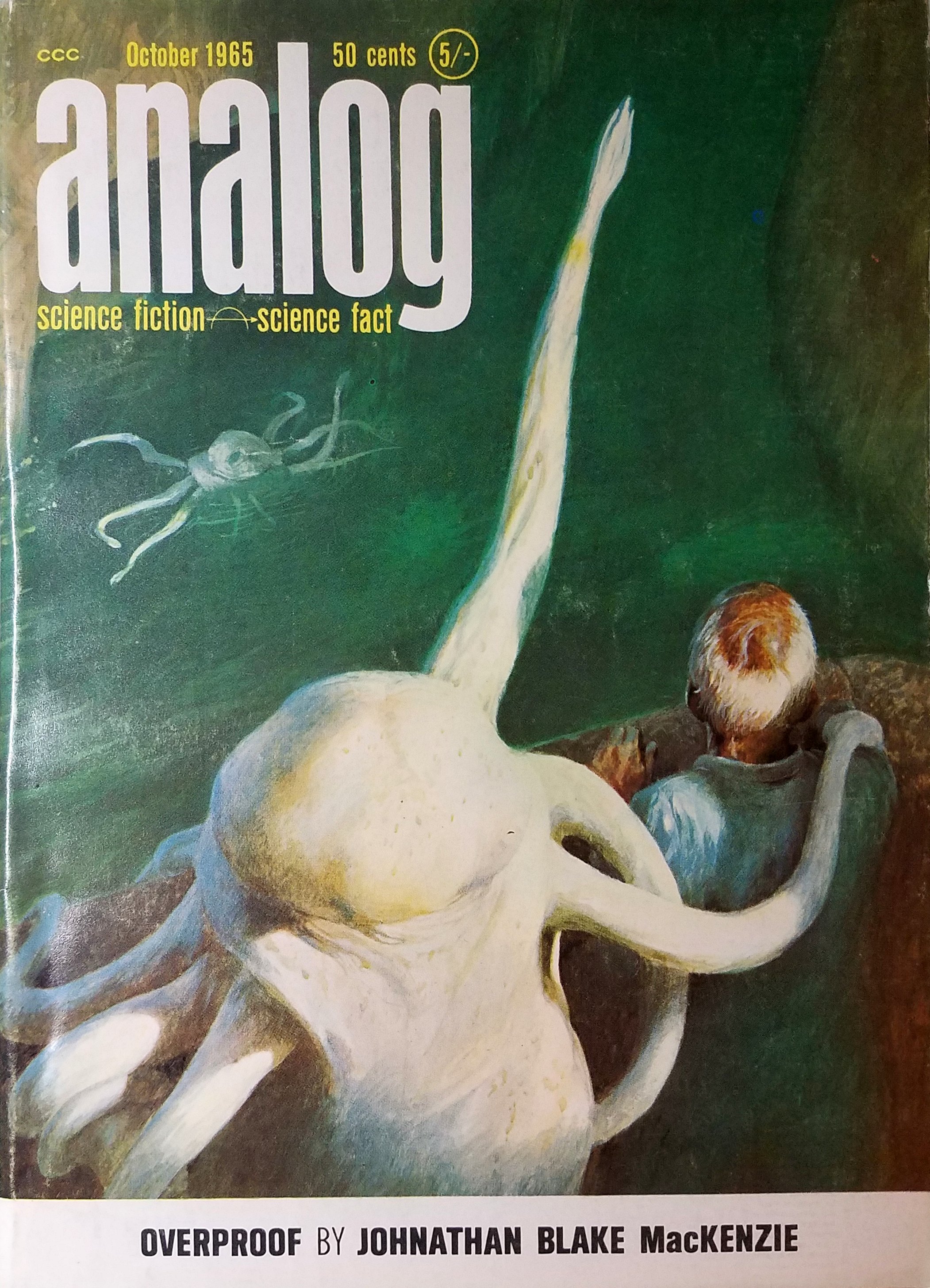
by John Schoenherr
Overproof, by Johnathan Blake MacKenzie
On a planet two hundred light years from home, a husband and wife pair of anthropologists come across a horrifying discovery. The native Darotha, an amphibian race resembling across between a cat and an octopus, are eating humans. At least, it seems that way – the Yahoos, apelike herd animals on their planet, bear a striking resemblance to homo sapiens. Are the Darothans really mass murderers? Or are looks deceiving?

by John Schoenherr
This is an interesting piece that Randall Garrett (under a pseudonym) has offered up. Unusually for an Analog story, the Darothans are a well-drawn alien race and not played for inferiority – indeed, they are treated with sensitivity not only by the author but by the Terran colonists on the planet, who see them as exciting as potential partners and as an example of non-human society. In the end, the story is essentially an inverse of Piper's Fuzzy stories, where the question is not whether the humanoid Yahoos possess the spark of humanity, but whether they don't.
It's not a perfect story. The conclusion is pretty obvious from the beginning, it meanders and repeats a bit, but it's more subtle than what I usually see in Analog, and it kept me interested.
Three stars.
The Veteran, by Robert Conquest
Humans from the future, who have forgotten the art of war, summon someone from the past to lead them in a war against alien nasties. Unfortunately for them, the person they've found is a devout pacifist. But luckily, the fellow discovers the battle lust within that he needs to fulfill his role.
Rather offensive, simplistic, and for some reason, the aliens conquer our solar system in reverse order of distance from the Sun even though it's unlikely that they'd all be lined up so obligingly.
Two stars.
Snakebite!, by Alexander W. Hulett, M.D. and William Hulett
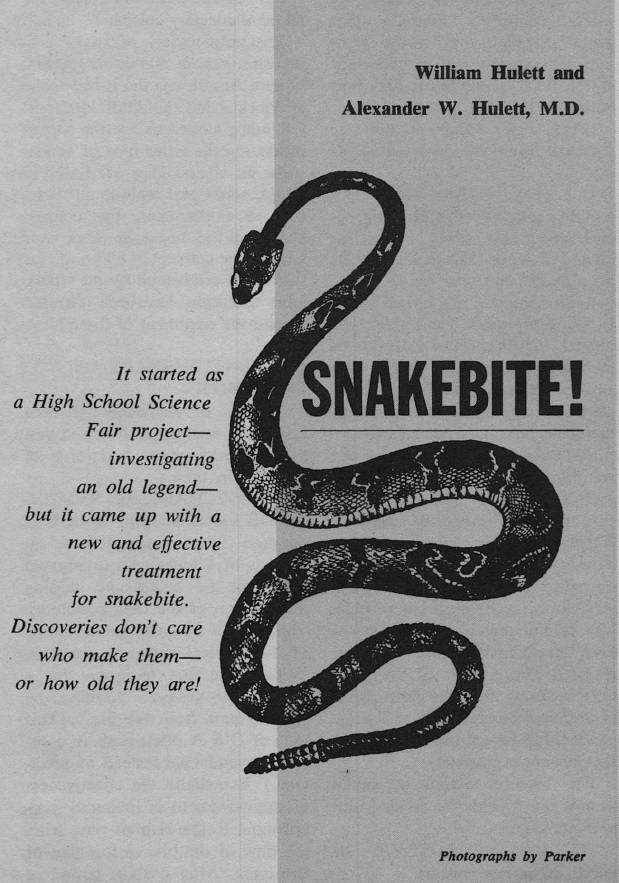
For some reason, Campbell saw fit to include this high school science project discussing the use of snake venom to produce antivenom blood serum in rodents. As an actual article, it might have been mildly interesting, but in its current form, it's pretty pointless.
Two stars.
The Mischief Maker, by Richard Olin
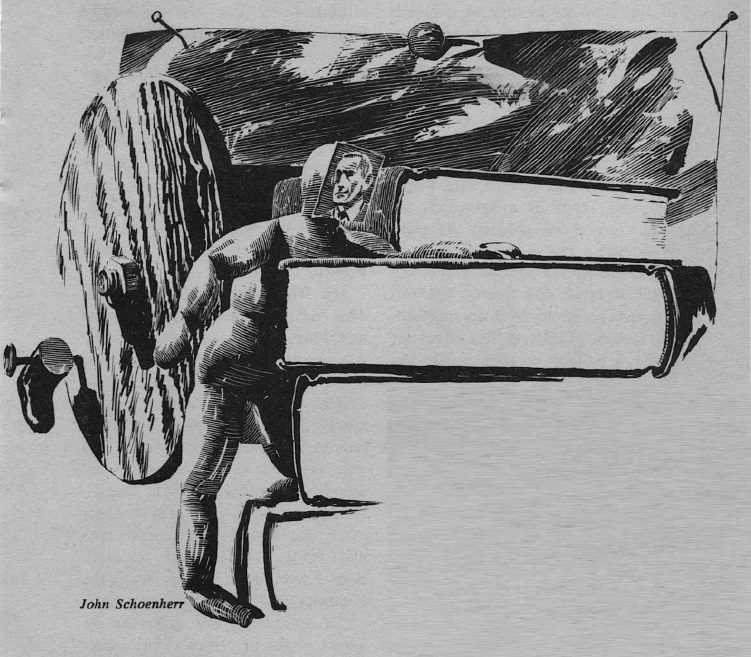
by John Schoenherr
A story told in epistolary, Maker describes how a crackpot professor with a grudge stumbles across the great power of the Law of Analogy, which he uses to destroy the leaders of America through various bits of voodoo and witchcraft. Truth be told, my eyes glazed over when the author mentioned the Hieronymous Machine, that psychic amplifier requiring no power source that editor Campbell is so enamored of.
Two stars.
Space Pioneer (Part 2 of 3), by Mack Reynolds
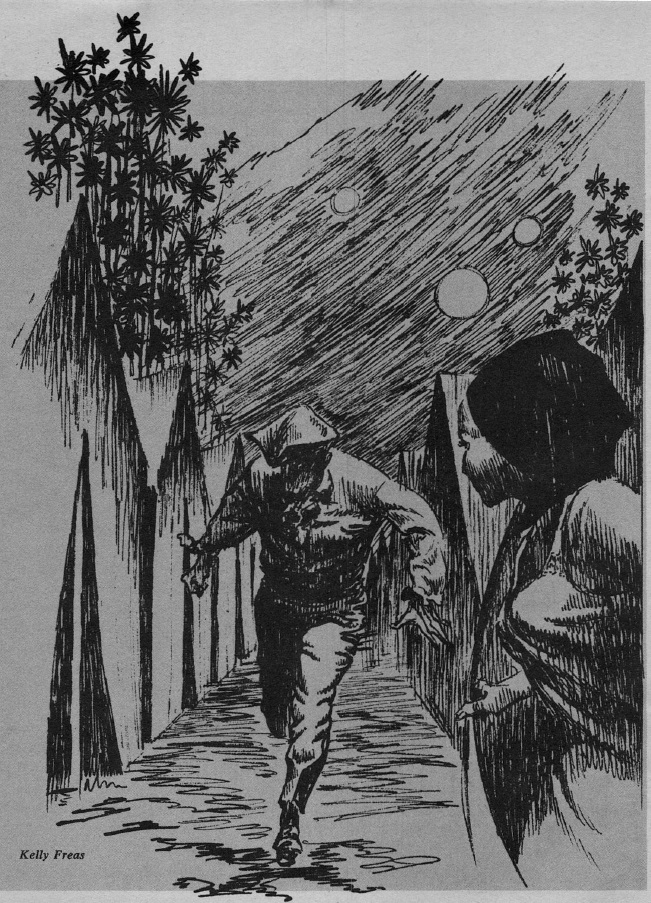
by John Schoenherr
Last but not least, we have the continuation of Reynolds' serial that began last month. When last we'd seen the assassin impersonating Rog Bock, shareholder in the colonial venture on New Arizona, his masquerade had been discovered by at least one other shareholder.
Part 2 begins with the colony ship Titov landing on its virgin planet destination, so closely resembling Earth as to be a near twin. The rapaciousness of the shareholders' goal becomes clear as the 2000 colonists find they have virtually no rights, that the shareholders plan to sell the valuable resource rights to outside entities almost immediately, and that the crew of the ship largely comprise ex-military personnel to make them a ready police force to keep the settlers in line.
Unrest threatens to boil over as the colony teeters on the brink of collapse, reeling from colonist indolence and sabotage by unknown persons – but by the end of this installment, they all have bigger concerns to worry about…
Again, Pioneer has only the barest trappings of science fiction. Nevertheless, this is one of Reynolds' more deft tales, and I'm enjoying it a lot.
Four stars for this bit.
Seismographic Data

Where does this leave us for the month? Well, Analog clocks in at just 2.7 stars, below Fantasy and Science Fiction (3.4), Science Fantasy (3.3), New Worlds (2.8), and Worlds of Tomorrow (2.8); it is just tied with the lackluster Galaxy.
It did manage to beat out the disappointing Amazing (2.6), IF (2.3), and the truly awful Gamma (1.5), however.
There were just two and a half pieces written by women (one was co-written) out of 58: 4.3%. Surprisingly, the women-penned tales were all in the UK mags, which are usually all stag. No women authors were included in either of the "All Star" Galaxy and F&SF issues this month, which is a real shame. Where are Evelyn Smith and Margaret St. Clair?
Perhaps they are planning to return with a bang. I certainly expect to herald their next stories with fireworks!
Looking for good science fiction by women? Look no further than Rediscovery: Science Fiction by Women (1958-1963), the bestseller containing 14 of our favorite stories of the Journey era!

![[September 30, 1965] Big and Little Bangs (October 1965 <i>Analog</i>)](https://galacticjourney.org/wp-content/uploads/2020/09/650930cover-672x372.jpg)


